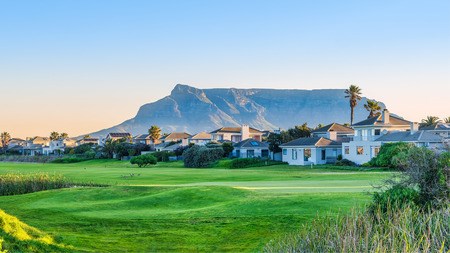Historic building practices of different cultural groups have allowed optimum indoor comfort in extreme weather conditions for generations. However, interior comforts available to those resident in sunny South Africa, are heavily reliant on individual financial lifestyles.
Since a north-facing orientation remains the most practical and cost effective option that allows winter sun and the retention of interior heat during cold periods, this also increases the need for insulation and cooling during summer.
Architects say the installation of temporary shutters or awnings over north- and west-facing windows will provide shade in summer but can be removed during winter for maximum interior heat in the cold months. Builders suggest the removal of paving in front of these windows as a cost effective alternative.
Depending on the built-design and era of a house, residents in older structures often do not have air conditioners or ceiling fans. Instead, property owners are increasingly relying on newly-added solar powered cooling systems or attic fans for relief during hot summer periods. Other cost-effective yet practical remedies include the use of electric fans to extract hot air outward through windows and doors, or ceiling fans, which optimise circulation in living areas.
However, although new technology ensures greater energy efficiency in most appliances, these options also run up utility bills. Older high-rise apartment buildings are known to have limited numbers of opening doors and windows. As a result, natural cooling methods remain the only option where living conditions lack natural ventilation. This is also when traditional cooling methods, such as partially dampening curtains and blinds to release evaporated air, as seen in the hottest parts of India, still come in handy to induce a good night’s sleep.
Classic lessons can be learnt from ancient cultures that have over time reflected innovative yet simple insulation solutions, which are still applied through passive building methods today. One such example is the adobe clay building method, which is both a practical and economical solution ideal for low-income housing, and is seen across Africa. Residents who live in these boldly decorated mud huts have long learnt the art of retaining cool interior air during summer and warm air in winter.
When less has to be more, such as when cross-ventilation to allow the exchanging of hot and cold air through enclosures in opposite directions is not possible, the closing of doors and windows during the hottest part of the day, and opening up after dark, offers much relief. Darkened rooms, still a common sight during the famous afternoon siestas in the Mediterranean regions of Spain and Greece, have been known to provide ultimate interior comfort in the most basic of built structures.
Depending on interior ventilation, hot air rising into upper levels of double-storey houses can get trapped in mezzanine and attic floors. Greater indoor comfort is achievable by using ground-floor living spaces by day and upstairs areas by night, until sufficient circulation has cooled the area.
Agents’ best advice to summer house buyers, is to check if any roof insulation has been installed. Alternatively, builders say that installing reflective materials below rooftops to reduce a build-up of hot air during daylight hours, is money well spent.
Architects say outdated designs are a far cry from modern departures, which are now leaning toward greater energy efficiency through passive orientation. They say South African new-builds of any proportion and scale, hold the potential for warm winters and cool summers.



